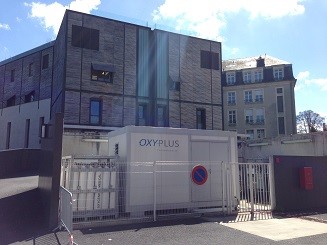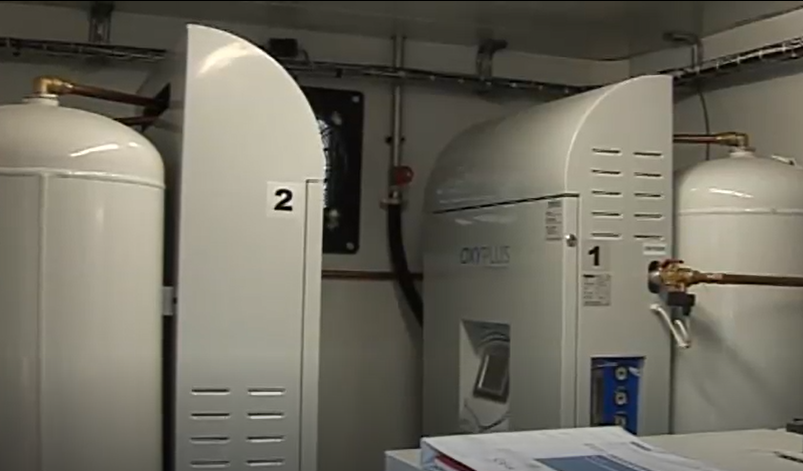The treatment of respiratory failure caused by severe cases of Covid-19 requires ventilation: this means oxygenating the patient via a mask or using a ventilator, in both cases connected to a source of medical oxygen. In times of a coronavirus epidemic, the availability of medical oxygen in sufficient quantity at hospitals is therefore critical.
How can on-site oxygen production provide an effective response to the increased oxygen requirements facing by our hospitals?
When a hospital is equipped with an oxygen generator, it becomes its own oxygen supplier: oxygen is produced on site, on demand, from ambient air. The hospital thus becomes autonomous: it no longer has recourse to oxygen deliveries in bulk or in bottles and is no longer dependent on the capacity of its supplier to deliver.
Thousands of hospitals around the world are already using medical oxygen generators. This autonomy is today within the reach of all health establishments. Oxygen generators are medical devices and the medical oxygen they produce is listed in the European Pharmacopoeia.
An oxygen generator in primary and secondary sources: an oxygen reserve in case of increased needs.
The production capacity of a generator is sized according to the specific needs of each hospital. For hospitals with operating theaters and / or intensive care, the generators are doubled in order to provide a double capacity compared to the nominal need. A precious oxygen reserve in the event of an abnormal increase of needs, such as the situation we live today.

Left and below: cabin installed at the Bayeux Hospital in Normandy, equipped with 2 medical oxygen generators and a high-pressure cylinder filling system
